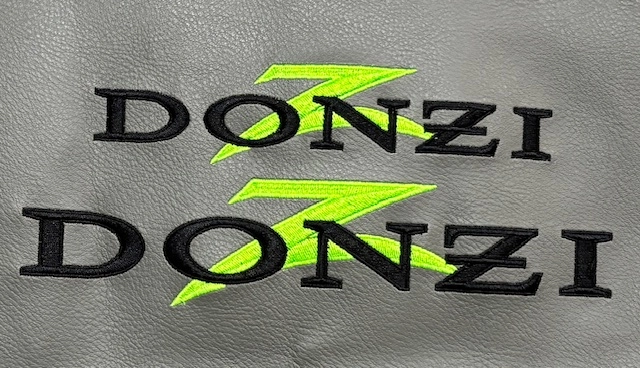The Art of Custom Embroidery: Opening the Secrets to Creating Distinct and Memorable Layouts
Embroidery, a craft soaked in practice and artistry, holds within its elaborate stitches the power to change fabric right into a canvas of special expression. The tricks to creating personalized needlework designs that astound the eye and leave an enduring impression hinge on a delicate equilibrium of technique, creative thinking, and interest to detail. As we explore the globe of customized needlework, we discover the nuanced interaction between string selection, sew complexity, and layout personalization that elevates a simple garment to a job of art. Join us on a trip with the art of personalized embroidery as we unwind the enigmas behind crafting really unforgettable and unique developments.
Selecting the Right Needlework Threads
When selecting embroidery strings, what essential variables should you take into consideration to ensure the best outcomes for your personalized styles? The choice of needlework string is critical in figuring out the final outcome of your stitched style. One of the key factors to consider is the material of the thread. Various products such as cotton, polyester, rayon, and silk provide differing levels of luster, durability, and appearance. It is vital to choose a thread product that complements the material you are embroidering on and straightens with the desired look of the layout.
Thicker threads can add dimension and structure to your style, while finer threads are perfect for elaborate details and tiny text. Furthermore, thinking about the shade fastness and washability of the thread is essential to make certain that your personalized layouts keep their top quality and vibrancy over time.
Discovering Various Stitch Techniques
To look into the world of 'Exploring Different Stitch Strategies', one have to grasp the ins and outs and subtleties that each sewing technique gives the art of embroidery. Different stitch methods not only add aesthetic passion yet also add to the total structure and dimension of the design. One prominent stitch technique is the satin stitch, which entails carefully stuffed parallel stitches to create a smooth and glossy surface, ideal for completing forms and developing strong describes.
On the other hand, the backstitch is a versatile technique frequently made use of for detailing and adding great information. It includes stitching backwards to create a strong line of needlework. Additionally, the French knot stitch includes a tactile component to layouts, excellent for producing distinctive accents like flower facilities or decorative touches.
Checking out different stitch methods permits embroiderers to play with light, shadow, and deepness within their designs, raising the aesthetic allure and imaginative quality of their needlework tasks. By grasping different stitching approaches, one can unlock limitless opportunities for creating one-of-a-kind and unforgettable custom embroidery items.
Incorporating Personalized Design Components
Having actually discovered the ins and outs of different stitch techniques such as the satin stitch, backstitch, and French knot, the emphasis currently changes towards incorporating personalized layout components in personalized embroidery tasks. Individualized style aspects play a crucial role in making embroidery tasks genuinely unique and unforgettable.
One more way to include tailored additional reading style aspects is by consisting of signs or motifs that hold unique significance to the recipient or mirror their rate of interests and personality. As an example, integrating a favorite blossom, pet, or hobby-related sign can make the embroidery layout a lot more significant and tailored. Furthermore, selecting colors that reverberate with the recipient or align with the designated motif can even more improve the customization of the embroidery job.
Mastering the Art of Color Control

One secret aspect of color control is comprehending shade theory. This includes recognizing how various colors engage with each various other, the feelings they convey, and exactly how they can be combined to create visually enticing designs. By applying shade concept principles, embroiderers can create harmonious shade palettes that boost the overall appearance of the design.
Furthermore, taking notice of contrast is vital in color coordination. Utilizing contrasting shades can aid certain components of the style pop, boost legibility, and create a visually dynamic needlework piece. By grasping the art of shade control, embroiderers can boost their designs and create remarkable items that reverberate with customers and viewers alike.
Enhancing Texture With Advanced Needlework Stitches
French knots, for instance, are ideal for adding little, increased dots to your style, simulating the look of beads or producing a textured surface. Bullion knots, on the various other hand, can be made use of to develop twisted, ropelike components that include a luxurious feel to the embroidery. Seed stitching entails little, scattered stitches that can complete locations with a speckled texture, while turkey job creates fluffy, dimensional accents reminiscent of pet fur or foliage. Try out these innovative needlework stitches enables you to push the borders of standard embroidery and create absolutely one-of-a-kind and visually appealing appearances in your styles.
Conclusion
Finally, the art of personalized needlework includes a combination of picking the ideal strings, checking out various stitch strategies, integrating personalized design components, mastering shade control, and improving texture with advanced stitches. By comprehending and implementing these crucial components, embroiderers can create special and unforgettable layouts that display their creativity and ability. Needlework fanatics can unlock the tricks to developing stunning and custom pieces that stand apart and leave a long-term impression.